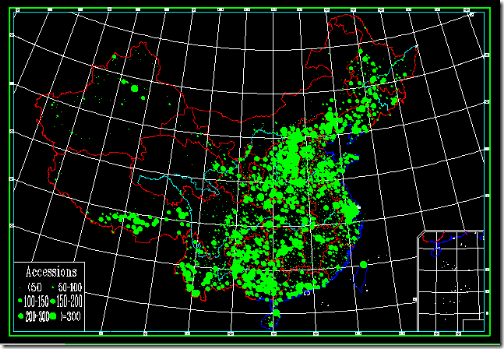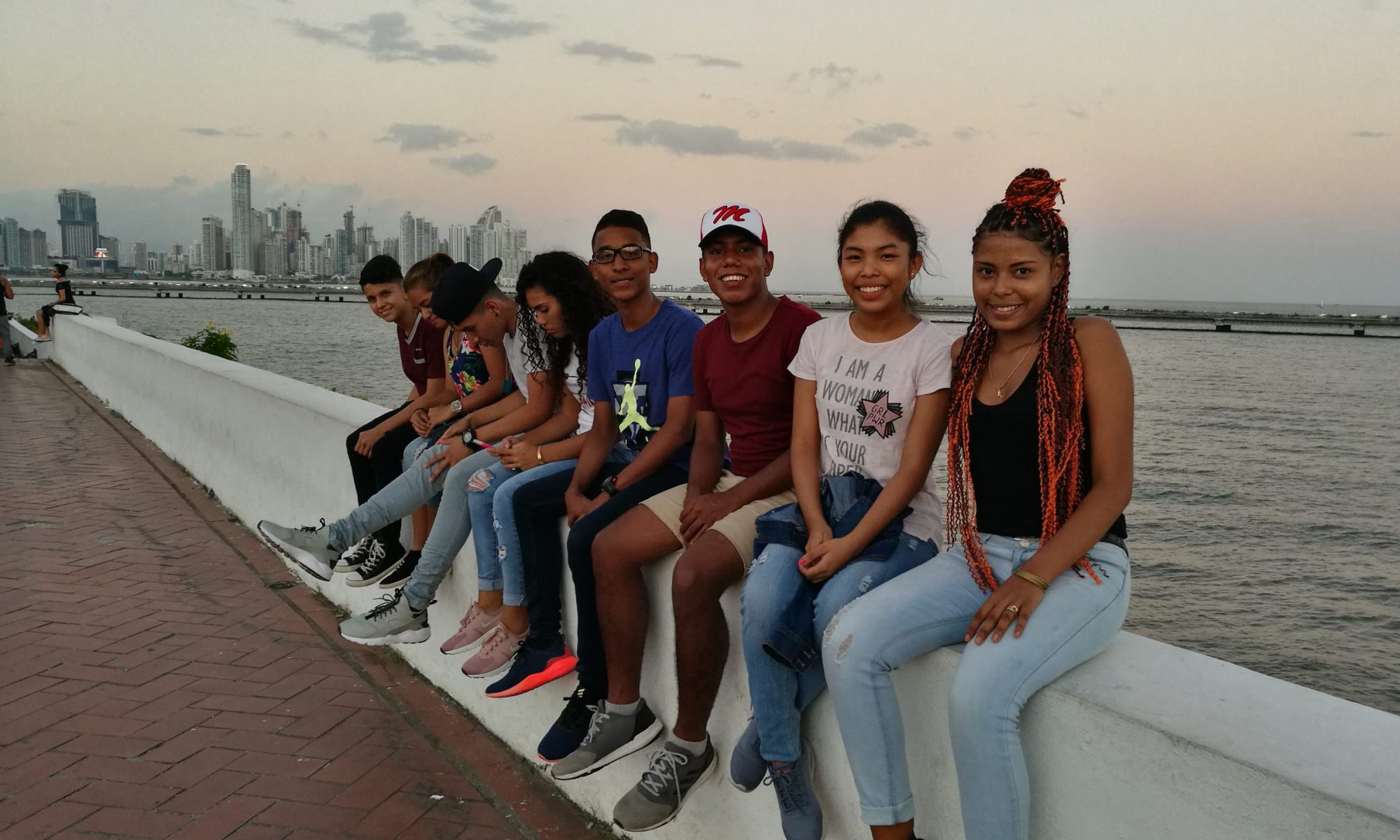刚在博客右下角的google RSS看到的一篇科普新闻文章,ARS信息部门的头头写的他们的一个科学家在厄瓜多尔做的资源保护工作。个人觉得其标题取得不错,“保存过去以保护未来”,就像原来《走进科学》当年给我们做一期节目《寻找失落的基因-中国国家种质库》(详见./oldblog/article.asp?id=138)一个意思,呵呵。有时英文比中文更好表达意思,像这个标题,我就想了很久,也没能想出一个完美的中文村题。
该文还是给了我们一些有益的启示的。作物种质资源保护工作是一项比较难以开展的工作,多数古老的农家品种一般都栽培在经济发展相对比较落后、交通闭塞的地区,随着经济的发展,这些地区农业人口纷纷外出务工,农业人口减少,地越种越少,再加上这些老品种在栽培经济性方面普遍不如商业品种,其生存形势是岌岌可危。虽然我们国家在过去的几十年里进行过大规模的资源考察和征集工作,但收集到的资源数量应该还是远远少于实际存在资源数的,这一点能明显从我国农作物资源分布图中看出来,比如说云南地区的资源分布就明显与实际情况不符,后藏地区资源如此众多是因为开展过一次大规模的西藏地区农作物考察收集工作,效果极其明显。所以,如何结合当地经济发展的议题开展资源保护与抢救性收集工作应是当前资源工作的重要内容。很明显的一点,有价值的东西才能存在,资源只有得到利用才会得到更好的保护与发展。像文中提到的充分利用安第斯山区特色作物资源进行特色农产品深加工开发、手工艺品开发和特色农家旅游等就是十分好的借鉴。这样既保护了当地作物多样性,又为当地百姓谋得一条特色经济发展之路。

中国主要农作物种质资源地理分布图(来源于http://www.cgris.net)
文章里的中文是我的注。
以下资料来源于http://www.swnewsherald.com,原文链接为http://www.swnewsherald.com/online_contentcrf/2009/09/essept09_3crops.php,
作者为SANDY MILLER HAYS, Agricultural Research Service
-----------------------------------
Preserving the Past to Protect Our Future
By SANDY MILLER HAYS, Agricultural Research Service
Agricultural research isn’t all “sows, cows and plows,” with a few microscopes and DNA sequencers thrown in. Just ask Karen Williams.
She’s a botanist in the Plant Exchange Office of the Agricultural Research Service (ARS) National Germplasm Resources Laboratory in Beltsville, Md., right outside of Washington, D.C. But when Dr. Williams wants to get out town, she’s not thinking about Philadelphia or New York. Her “getaway” is the town of Cotacachi, Ecuador, in the heart of what some consider one of the cradles of world agriculture.
That’s where Dr. Williams works with an international team of scientists to help conserve traditional crops and, at the same time, contribute to the livelihoods of the local people.//说是说替人保护资源,造福当地人,然后呢。。。看下面
In the communities around Cotacachi, tucked away in the northern Andean highlands of Ecuador, people have farmed for thousands of years. The crops they grow are both familiar and not familiar — yes, there’s corn, but there are 30 varieties of it. Beans? The Quichua-speaking farmers and backyard gardeners have 40 varieties. //丰富的资源啊,看上的是这些东西
These native crops can be an untapped treasure trove for scientists seeking solutions to modern American agriculture’s problems. Often, an ancient version of a crop contains genes that can help a modern version of that same crop in the United States overcome a pest or disease. It’s just a matter of tapping into those long-ago genetics and incorporating the needed genes into a plant breeding program that melds old with new. //利用这些古老资源所蕴含的丰富基因解决美国现代农业生产中的重要问题,这才是真正目的
But in Cotacachi, these ancient crops are more than just a genetic resource; they’re a way of life and the basis of food security. Yet, as has happened in many rural areas, including in the United States, life is changing in Cotacachi. Many families now rely on income from off the family farm, and the men often work away from those farms.
This is where Dr. Williams comes in. She’s been going to Ecuador since 1995, when she first went there to help reestablish Ecuador’s national peanut germplasm collection, fill gaps in the U.S. Department of Agriculture (USDA) peanut germplasm collection, and strengthen U.S.-Ecuadorian collaborations in genetic resources.
But her mission has expanded beyond that in the ensuing years. In partnership with an indigenous community organization called the Union of Indigenous and Peasant Communities (UNORCAC); Bioversity International, and the Ecuadorian National Agricultural Research Institute (INIAP) — the equivalent of ARS in Ecuador — she’s helped set up and now advises a program designed to promote conservation and increase use of local crops in the area. This program is funded in large part by USDA’s Foreign Agricultural Service.
What’s been accomplished? Scientists have preserved samples of the area’s genetic treasure trove in the National Germplasm Bank at the INIAP Santa Catalina Experiment Station near Quito. Farmers worked with the scientists to evaluate the local varieties of crops in a community garden in Cotacachi, and a catalogue was produced to document the vastness of the diversity. Seed fairs give farmers the chance to display and exchange crop varieties.
A food processing plant has been built to develop and package salsas, marmalades and other products made from the local crops. There’s a community-run ethnobotanical garden that provides local midwives with medicinal plants, helps educate local schoolchildren about their cultural heritage, and generates income from visitors coming to see the diversity of local Andean plants. //为当地农业经济作贡献
The project has financed construction of rustic rural lodges owned by local families who offer lodging to those visitors. Visitors can learn about traditional crops and farm practices as the families prepare meals made with the yields of their dooryard gardens. The much-needed income that comes from the visitors helps encourage continuing conservation of the traditional crops. //类似于“农家乐”的经营项目
Local women have formed cooperatives that use the crops to make a variety of items offered for sale to tourists: handcrafted necklaces made from native variegated lima beans called “tortas,” for example, and traditional sandals and decorative weavings from the fiber of the cabuyo plant, a relative of agave.
All this activity helps ensure the continuation of those ancient crops, so important to the people of Cotacachi, and to the continued success of the crops that we count on to feed ourselves in this country. And it’s definitely not “just another day in the lab” for Dr. Karen Williams!
